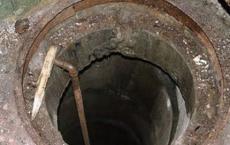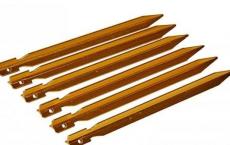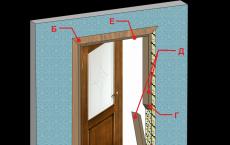Ways to decorate the bathroom with a mosaic with your own hands
Mosaic panels are widely used in the decoration of premises for various purposes, building facades. The main materials used in production are glass, ceramics. Not surprisingly, bathroom mosaics are very popular. Repairmen are attracted by the practicality of the material. Interior designers appreciate the richness of design solutions. Mosaic is suitable for finishing the entire room and looks great as an element of decor.
For the production of mosaics, various materials are used - from classical ceramics to modern plastic. True, the latter did not take root at the repair sites. Specialists unconditionally prefer environmentally friendly components.
Another argument in favor of proven technologies is the test of time. Mosaic compositions have been known since ancient times and have become an integral part of the art of almost all eras. For thousands of years, the principle has remained unchanged - a single picture, ornament or intricate pattern is made up of small fragments. The main materials for the manufacture of mosaics are:
- ceramics;
- glass;
- stone;
- smalt;
- metal.
Mosaic from any of the above materials is applicable in a bathroom. Also, within the framework of design solutions, it is possible to combine glass or ceramic on the walls and stone mosaics on the floor.
Glass mosaic panel in the bathroom
Features of mosaics from various materials
Each type of mosaic has its own unique color and has certain properties:
- Ceramic mosaic is the most common. She often trims not only walls or floors. Close in tone squares lay out the bowls of the pools, the inside of the baths, washbasins, showers.
- Glass mosaic in the hands of professionals is an ideal material for creating fascinating panels. Manufacturers produce fragments of various shapes, colors, textures. For production, transparent, translucent or frosted glass is used. Often, “pebbles” are stylized as sea pebbles or semi-precious gems - in the bathroom, such a solution will look especially impressive. Various additives in glass determine the richness of the color range, various effects: gradient, stains, transitions from one color to another.
- Stone mosaic has a special visual appeal. Manufacturers have learned how to most advantageously present the features of natural stone - texture, color transitions, natural patterns. The mosaic of semi-precious stones is especially highly valued - this finish looks truly luxurious.
- Smalt mosaic is known for its durability and amazing inner glow effect. Compositions from this material look alive, warm. Smalt was widely used in Europe and Russia to create unique panels, many of which have survived to this day.
- Metal mosaic is used less often, but can be used to emphasize individual elements of the overall composition.
IMPORTANT TO KNOW: When creating mosaic panels, they think over the lighting system of the room. A certain direction of light emphasizes the beauty of the composition and helps to bring out the properties of the material.
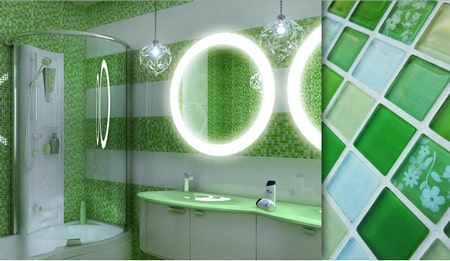
Glass mosaic in combination with light-colored tiles looks very light and does not weigh down the design.
How to prepare the surface for tiling
There are a lot of options on how to glue mosaics in the bathroom. It all depends on the type of mosaic panel. For laying on walls or floors, blanks are used or a composition is laid out from individual fragments. However, in any case, there are similar features:
- surface preparation;
- marking of the working area;
- gluing the mosaic with a special glue;
- dismantling of the protective paper (in the case of using the matrix method);
- grouting tile joints.
Surface preparation provides for a standard bathroom procedure:
- mandatory treatment with a fungicidal composition to prevent the appearance of fungus or mold;
- creation of a waterproofing layer on the floor and walls adjacent to the bathroom;
- careful leveling of the working surface;
- priming with light materials - this is especially important for transparent mosaics.
Techniques for sticking mosaics on the walls and on the floor practically do not differ. The material can serve as a base finish for both surfaces.
IMPORTANT TO KNOW: Reproducing the contours of a mosaic pattern is an indispensable condition for the successful gluing of a figured composition .
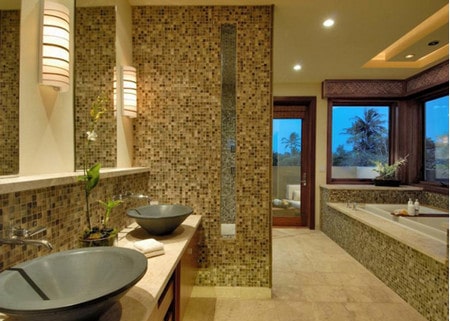
An example of the use of mosaics as the main finishing material
Novice repairmen usually take the path of least resistance and buy mosaic blanks: the fragments are square in shape - 10x10 cm, 20x20 or 30x30 cm. Small pieces are much easier to stick on. However, if there is a plot composition in the plans, you will have to make a stencil and cut out the desired figure using special wire cutters. Tiles are trimmed with extreme care so as not to damage the mosaic.
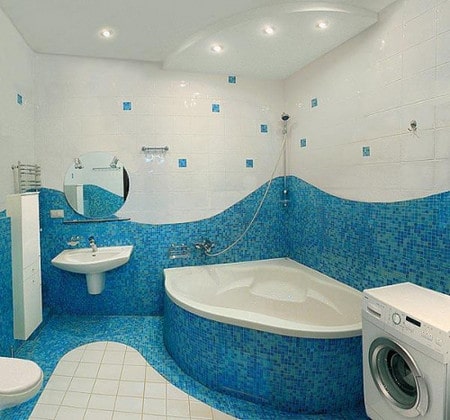
With the help of a mosaic of "marine" shades, the illusion of a wave on the walls and a coast on the floor is created.
If the mosaic is combined with ordinary ceramic tiles, the tiles are laid first and leave space for the composition. Then proceed as follows:
- mosaic sheets are tried on at the location and checked for compliance with the idea or plot;
- the workpiece is placed on a flat surface face down, a uniform layer of glue up to 10 mm thick is applied to the working surface using a notched (comb) trowel;
- stick the sheet on the wall or floor, gently press it with a rubber staple;
- after the glue has hardened, the mounting paper is removed (at least two days must pass), it is pre-moistened with water;
- carry out the grouting of tile joints with epoxy grout using a rubber float;
- excess epoxy is removed from the tiles before the material hardens with a foam sponge.
IMPORTANT TO KNOW: The operation of the bathroom can be started after the grout has completely solidified between the seams. The term is 20 days.
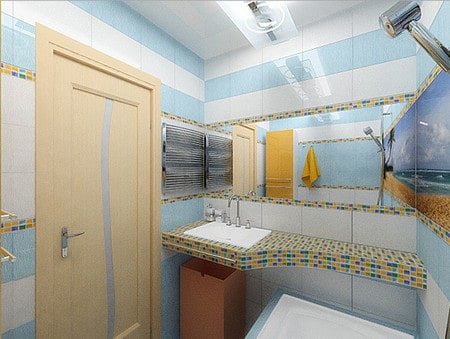
Mosaic is used for finishing individual surfaces and as a frieze.
How to create story panels from mosaics
Mosaic decoration of the bathroom will look especially impressive if you lay out a composition from separate fragments. Such work requires the presence of spatial imagination, the ability to draw, combine colors.
The practical implementation of the idea is preceded by calculations of the number of mosaics of each color. To do this, create a life-size sketch of the future panel and carefully measure each segment. The painstaking work is worth the effort: it is necessary to provide a small margin and avoid a shortage of material.
The wall sketch is drawn as accurately as possible, with details. It is not forbidden to use a stencil. Relying on the eye and drawing skills on paper is not worth it.
Each mosaic element is carefully smeared with glue and pressed tightly. The composition is laid out from top to bottom. If stones of different shapes are used, the fragments that are most closely adjacent to each other are selected so that there are no wide gaps. Large elements are surrounded by smaller ones: it is easier to pick up the next piece. At the end of the installation of the composition, the joints are also grouted.
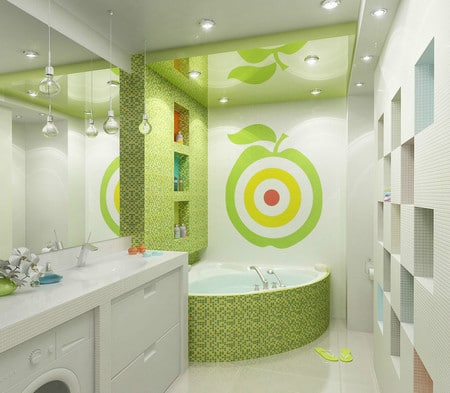
Mosaic as an element of space zoning: with the help of small tiles, the bath area is highlighted
The ease of working with mosaics is deceptive. This is a rather laborious stage of repair work, especially if a design project is planned to be implemented. Hiring a specialist is the best possible idea. Experienced professionals will worthily realize the original idea, perform the most complex work, and bring the joy of renovation to the house. The bathroom, which was entrusted to the masters of their craft, will delight for many years and will not cause problems in daily use.

